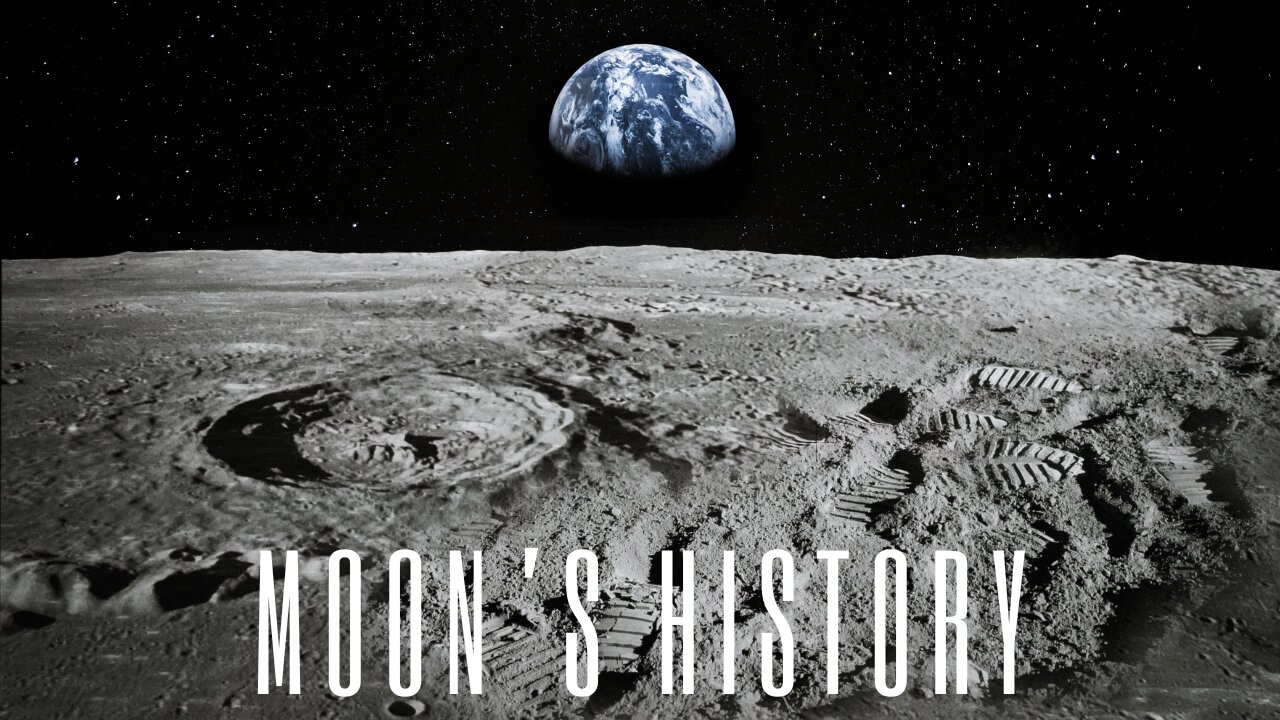Premium Only Content

Moon's Geography And History : Moon Part-2
The Moon has played a significant role in human history, culture, and scientific exploration. Here are some key points in the history of the Moon:
Ancient Observations and Beliefs:
Early Observations: The Moon has been observed by humans for thousands of years. Its changing phases and regular cycles were often associated with religious and cultural beliefs.
Lunar Calendars: Many ancient cultures, such as the Babylonians, Egyptians, and Chinese, developed lunar calendars based on the Moon's phases. These calendars played a crucial role in agriculture, religious ceremonies, and daily life.
Moon in Mythology and Culture:
Mythology: The Moon has been a prominent figure in myths and legends across various cultures. For example, in Greek mythology, Selene was the goddess of the Moon.
Art and Literature: The Moon has inspired countless works of art, literature, and poetry. It has been a symbol of beauty, romance, and mystery.
Scientific Understanding:
Moon as a Celestial Body: The Moon is Earth's only natural satellite. It is about one-sixth the size of Earth and is thought to have formed about 4.5 billion years ago.
Early Observations with Telescopes: The invention of the telescope allowed astronomers like Galileo Galilei to make detailed observations of the Moon's surface in the early 17th century.
Space Exploration:
Space Race: The mid-20th century saw a significant interest in lunar exploration, fueled by the Cold War rivalry between the United States and the Soviet Union. This led to the famous Space Race.
First Human Landing: On July 20, 1969, NASA's Apollo 11 mission successfully landed astronauts Neil Armstrong and Buzz Aldrin on the Moon. Armstrong's famous words, "That's one small step for [a] man, one giant leap for mankind," marked a historic moment.
Subsequent Apollo Missions: There were a total of six manned Apollo missions that landed on the Moon between 1969 and 1972, providing valuable scientific data and lunar samples.
Recent Exploration:
Robotic Missions: Since the Apollo era, various robotic missions have been sent to study the Moon. This includes orbiters, landers, and rovers from different space agencies.
International Collaboration: In the 21st century, there has been increased international collaboration in lunar exploration. Countries like China and India have successfully launched lunar missions.
Artemis Program: NASA's Artemis program aims to return humans to the Moon, with plans for sustainable lunar exploration and the eventual goal of sending astronauts to Mars.
The Moon continues to be a subject of scientific inquiry, cultural significance, and potential future exploration. Ongoing and future missions are expected to deepen our understanding of the Moon's history and its role in the broader context of the solar system.
-
 LIVE
LIVE
The Quartering
1 hour agoThe End Of Trans Madness, Alex Jones Loses Final Plea, Rock Bottom For Star Trek & More
8,889 watching -
 LIVE
LIVE
Right Side Broadcasting Network
2 hours agoLIVE: President Trump Participates in the Charlie Kirk Medal of Freedom Ceremony - 10/14/25
3,605 watching -
 36:53
36:53
Stephen Gardner
1 hour ago🔥LEAKED! Trump's Secret ANTIFA Takedown Plan EXPOSED!!
728 -
 1:07:45
1:07:45
The White House
2 hours agoPresident Trump Participates in a Bilateral Lunch with the President of the Argentine Republic
7K10 -
 LIVE
LIVE
Barry Cunningham
2 hours agoBREAKING NEWS: PRESIDENT TRUMP AND PRESIDENT OF ARGENTINA JAVIER MILEI MEET
1,563 watching -
 5:22
5:22
Michael Heaver
3 hours agoFarage Issues URGENT Warning To Britain
27 -
 1:22:01
1:22:01
Sean Unpaved
4 hours agoMNF Madness, CFB Week 7 Rewind, & MLB's ALCS & NLCS Playoff Fire!
14.1K -
 1:02:05
1:02:05
DeVory Darkins
2 hours ago $28.61 earnedTrump drops NIGHTMARE News on Democrats as the Violent protestors gear up
94.8K40 -
 1:59:08
1:59:08
The Charlie Kirk Show
3 hours agoCharlie’s 32nd Birthday + Medal of Freedom | Sec. Bessent, Lavorgna, Zeldin, Sen. Lee | 10.14.25
74.6K85 -
 LIVE
LIVE
StoneMountain64
2 hours agoBattlefield 6 Sniping and Unlocking SNIPERS from LONG RANGE
75 watching